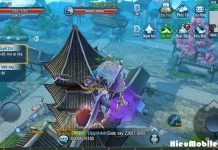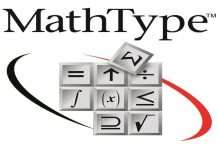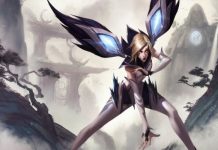Total War: Warhammer IIIDeveloper(s)Creative AssemblyPublisher(s)SegaDirector(s)Ian RoxburghSeriesTotal WarPlatform(s)ReleaseFebruary 17, 2022[1]Genre(s)Turn-based strategy, real-time tacticsMode(s)Single-player, multiplayer
Total War: Warhammer III is a turn-based strategy and real-time tactics video game developed by Creative Assembly and published by Sega. It is part of the Total War series, and the third to be set in Games Workshop’s Warhammer Fantasy fictional universe (following 2016’s Total War: Warhammer and 2017’s Total War: Warhammer II). The game was announced on February 3, 2021 and was released on February 17, 2022.[2][3][1]
Mục lục
Gameplay[edit]
Like its predecessors, Total War: Warhammer III features turn-based strategy and real-time tactics gameplay similar to other games in the Total War series.
Xem thêm: Total war: warhammer 3
In the campaign, players move armies around the map and manage settlements in a turn-based manner. Players engage in diplomacy with, and fight against, AI-controlled factions. When armies meet, they battle in real-time. The game will also have a custom battles mode where players can create customised real-time battles, as well as online multiplayer battles. Those who own races from the first two games will have the same races unlocked for multiplayer in the third game; a combined world map, similar to the “Mortal Empires” campaign in Total War: Warhammer II for owners of the first two games, will also be developed.[3]
The races announced with the game are the human civilizations of Grand Cathay (based on Imperial China) and Kislev (based on Medieval Russia),[4][5] and five Chaos factions – four devoted to each of the Chaos Gods (Khorne, Tzeentch, Nurgle, and Slaanesh), and the Daemons of Chaos, led by a Daemon Prince that can be customized by earning “Daemonic Glory” through the course of the campaign.[6] Another race, the Ogre Kingdoms,[3][1] was made available to “early adopters” (those who pre-purchased the game before release, or purchased within the first week after release).[2][3][7]
The main campaign takes place within the Realm of Chaos, said to be the source of all magic in the Warhammer Fantasy setting.[2][8] Game director Ian Roxburgh has said the campaign map will be “twice the size” of the Eye of the Vortex campaign map that appeared in Total War: Warhammer II.[3]
Plot[edit]
Prologue[edit]
During the end of winter in the lands of Kislev, Ursun, the Bear-God, would break winter with his roar and bring forth summer. One day, Ursun vanished, and for seven years, Kislev has suffered an unending winter. The Barkov brothers, Yuri and Gerik, are sent by Tzarina Katarin on an expedition north to search for the missing god. During his prayer, Yuri hears Ursun’s voice. Ursun claims that he has been imprisoned in the Howling Citadel, located in the Chaos Wastes.
Yuri travels with his brother and his army to the Chaos Wastes to free his god, but is slowly corrupted by Chaos in his methods to reach Ursun’s prison. Eventually, Yuri murders his brother, Gerik, and offers his skull to a Greater Daemon of Khorne to build a bridge of skulls to cross the Howling Citadel. Yuri and his army reach the Howling Citadel, and after defeating a chaos-corrupted Boyar and his forces guarding the citadel’s entrance, Yuri enters a portal to the Realm of Chaos.
Đọc thêm: TOP 18 trang web đọc báo tiếng Anh bổ ích, tốt nhất hiện nay
After emerging from the portal, Yuri finds the imprisoned Ursun, and is greeted by Be’lakor (voiced by Richard Armitage), the first of the Daemon Princes. Be’lakor reveals that it was he who guided Yuri by mimicking Ursun’s voice. Ursun begs Yuri to free him, but Be’lakor manipulates Yuri into thinking that Ursun is weak and unworthy of his worship, tempting him to kill the god and take his power for himself. Yuri renounces Ursun and shoots a Chaos-imbued bullet into the Bear-God’s heart, and Ursun roars in pain. The resulting backlash hurls Yuri back to the material plane, with Yuri crashing into the ground severely wounded. Dying, Yuri offers his soul to the Chaos Gods and begs them to save him. The Chaos Gods answer his plea and ascend him into a Daemon Prince.
The Realm of Chaos[edit]
After the events of the prologue, Be’lakor has imprisoned the wounded Ursun in the Forge of Souls, located within the Realm of Chaos. Despising the Chaos Gods for taking away his power and physical form, Be’lakor plans to use Ursun’s power to take his revenge. Ursun’s pained roars have torn the fabric of reality, opening rifts between the material world and the Realm of Chaos and creating a maelstrom that has stranded Daemons in the mortal plane.
A character known as the Advisor (who provided the tutorials in the previous two games) has been enslaved by a corrupted book known as the Tome of Fates, bearing a curse of the Chaos God Tzeentch. He is able to use the book to offer counsel to others, but never for his own gain; however, he has learned that he can free himself from the book with a single drop of Ursun’s blood. He goes to several factions seeking allies to achieve his goals, offering to guide them into the Realm of Chaos to find Ursun:
The rulers of the Tzardom of Kislev wish to free their god and put an end to the eternal winter that scours their land, though tensions are fraught between the Ice Court, led by Tzarina Katarin Bokha, aided by her secret society of Ice Witches, and the Great Orthodoxy, led by Supreme Patriarch Kostaltyn, who believes Katarin to be an unworthy ruler, too focused on magic and politics instead of devotion. During the campaign, a side quest unlocked by controlling the three main Kislevite cities (Kislev, Praag and Erengrad) allows either faction to rescue and awaken Katarin’s father, the former Tzar Boris Ursus, from his icy slumber in the Frozen Falls, unlocking Boris and his faction, the Ursun Revivalists, as a playable faction for future campaigns.
The dragon siblings of the Empire of Grand Cathay, Miao Ying the Storm Dragon (who controls the Northern Provinces) and Zhao Ming the Iron Dragon (who controls the Western Provinces), are unconcerned about Ursun’s fate, believing themselves to be older and wiser than any god. However, they are still convinced to free Ursun, as the Bear-God is the only one who can inform them of the whereabouts of their missing sister Shen-Zoo, bringer of light and hope, who disappeared in Norsca long before.
The greedy, gluttonous Ogres of the Ogre Kingdoms in the Mountains of Mourn, led by the Overtyrant Greasus Goldtooth and the Prophet of the Great Maw, Skrag the Slaughterer, care little for the politics and conflict between Order and Chaos, but still desire to reach Ursun to feast on his divine flesh, and feed the remainders to their own god, the ravenous, eldritch entity known as the Great Maw.
The Daemons of Chaos each have their desires for Ursun. Skarbrand the Exiled One, greatest of all Bloodthirsters, wants Ursun’s skull so he can gift it to Khorne, the Chaos God of Blood and War, in order to earn forgiveness for his betrayal in the past. Kairos Fateweaver, the two-headed Lord of Change and Oracle of Tzeentch, the Chaos God of Sorcery and Deception, plans to take Ursun’s eyes to be able to see the present, as he can only perceive the past and future. Ku’Gath Plaguefather, greatest of the Great Unclean Ones of Nurgle, the Chaos God of Disease and Decay, wants to use Ursun’s corpse to brew a great plague known as a God-Pox. N’kari the Arch-Tempter, most favoured of the Keepers of Secrets of Slaanesh, the Chaos God of Excess and Desire, wishes to delight in Ursun’s eternal sorrow. Yuri Barkov, now a Daemon Prince known as the God-Slayer and leading the Daemons of Chaos Undivided, seeks to finish what he started by truly slaying Ursun and taking revenge on Be’lakor for his manipulations.
In order to reach the Forge of Souls where Ursun is imprisoned, each faction must travel to the Realm of Chaos, invade each of the four Chaos Gods’ domains and capture the soul of a Daemon Prince bound to them. As the factions battle for the Daemon Princes’ souls, it is revealed that Be’lakor intends to absorb Ursun’s divine power once he dies to transform himself into the Chaos God of Shadows. With an army of Soul Grinders created in the Forge of Souls, he will destroy the four Chaos Gods and rule unchallenged.
Tham khảo thêm: Bất ngờ rò rỉ thông tin về 4 nhân vật mới sẽ xuất hiện trong Genshin Impact 3.0, rõ từng đặc tính, chi tiết khiến CĐM ngỡ ngàng
Once all four souls of the Daemon Princes have been captured, Ursun finally dies. As Be’lakor undergoes his ascension to godhood, the Advisor uses the souls of the Daemon Princes to create a bridge leading to the Forge of Souls. The player’s faction battles Be’lakor’s army before finally slaying the Dark Master and preventing his ascension. After the final battle, the fate of Ursun and the player’s faction is revealed:
- The leaders of Kislev mourn the loss of Ursun, believing that with their God dead, Kislev will fall. However, Ursun is revived by their faith and devotion, and with his roar, he puts an end to Kislev’s endless winter.
- The dragon siblings of Cathay use spirit magic to speak to Ursun, and before fading from existence, he clues them to the location of their missing sister.
- The Ogres butcher and feast on Ursun’s carcass, and feed its remains to their deity, the Great Maw, briefly quelling its eternal, gnawing hunger.
- Skarbrand delivers the bear-god’s skull to Khorne. Whilst the Blood God revels in such a worthy offering, he does not forgive Skarbrand for his betrayal, rendering Skarbrand’s efforts in vain.
- Kairos takes Ursun’s eyes, and with the sight of a God he is finally capable of viewing the past, present and future.
- Ku’Gath uses Ursun’s corpse as the final ingredient to brew the ultimate plague, a God-Pox capable of infecting the Gods themselves.
- N’kari captures the last remains of Ursun’s spirit, basking in the God’s anguish at Kislev’s demise.
- The God-Slayer takes what power remains from Ursun’s corpse, allowing him to ascend to godhood and becoming Kislev’s new God.
The epilogue has the Advisor freed of his slavery from the Tome of Fates, and he is joined by a white crow. However, when he attempts to read the book, his sight is stolen, and the white crow is revealed to be a Greater Daemon of Tzeentch, known as Sarthorael the Everwatcher, with the Daemon binding the Advisor to his service. The epilogue also reveals that the game takes place before the events of the first game.
Champions of Chaos[edit]
For millenia, the servants of the Chaos Gods have clashed in the ancient city of Zanbaijin, the souls of those fallen in these vicious conflicts sealed within the Altar of Battle at the heart of the Fallen City. Now, Ursun’s pained roars have weakened the seal of the Altar of Battle, and the myriad warrior-souls of bygone eras within it lay ripe for the taking; such an amount could possibly forever change the balance of power between the four Chaos Gods.
Thus, each of the Chaos Gods have commanded one of their greatest champions to reach the city of Zanbaijin: Slaanesh sends Azazel, Prince of Damnation, and his Ecstatic Legions. Each of these champions will attempt to forge a path towards the Fallen City, by forcing open the still-healing scars in the world created by Ursun’s roar, before their rivals; there, they will perform a ritual to shatter the seal on the Altar of Battles and claim the souls within for their patron.
Downloadable content[edit]
Creative Assembly intends to release several paid and free DLC packs for the game, which expand its content.
Paid DLC Name Release Date Description Ogre Kingdoms February 2022 Adds the Ogre Kingdoms as a playable race in campaign and multiplayer, with two legendary lords: Greasus Goldtooth leading the Goldtooth faction, and Skrag the Slaughterer leading the Disciples of the Maw faction. Free for players who pre-ordered the game or purchased it in the first week after release. Champions of Chaos August 2022 Adds four new Warriors of Chaos legendary lords: Azazel, Prince of Damnation, leading the Ecstatic Legions faction, as well as new units, Regiments of Renown and mechanics. Free DLC and Updates Name Release Date Description Patch 1.0.1 February 2022 An assortment of balance changes and bug fixes. Patch 1.0.2 March 2022 An assortment of balance changes and bug fixes. Patch 1.1 April 2022 An assortment of balance changes and bug fixes, including an overhaul of the main Realm of Chaos campaign mechanics. Patch 1.2 May 2022 An assortment of balance changes and bug fixes, including one Regiment of Renown unit for each faction. Patch 1.3 June 2022 An assortment of balance changes and bug fixes, including one Regiment of Renown unit for each faction. Immortal Empires August 2022 Free update for owners of Total War: Warhammer and Total War: Warhammer II that will provide a campaign map that combines the main campaign maps of all three Total War: Warhammer games.[9]
Reception[edit]
Total War: Warhammer III received “generally favorable” reviews, according to review aggregator Metacritic.[10]
Chris Tapsell of Eurogamer praised the game’s tutorial and noted that the experience would be intimidating for new players because of the game’s tendency to leave more intricate mechanics inadequately explained. He deemed the game to be a hectic and stressful yet fun and ultimately rewarding experience, and recommended it.[22] Leana Hafer of IGN called the title a worthy capstone to the dark fantasy trilogy, praising its depth, quality of life improvements, alliances, and factions.[13] Fraser Brown of PC Gamer praised the addition of new modes and features, namely the Daemons of Chaos, and noted that the tutorial in the game was “the best tutorial Creative Assembly has put together”.[15] Shacknews similarly praised the new campaigns, races, customization, art presentation, and setting, and cited the lack of DLSS and platter drive load times as minor issues.[18]
PCGamesN liked the new campaign, saying it was an improvement over Warhammer II‘s because of a more interesting endgame, “It’s so much better than Warhammer II’s Vortex campaign… But because the winner in Warhammer II was whomever accrued the most ritual currency, their victory often felt just as inevitable as ever once they emerged from the pack”.[17] Despite liking the new tutorial and the “intense, breathless campaign, The Guardian criticized the harsher auto-resolve as making the title more repetitive, “a harsher autoresolve and tighter map means a tiresome number of forced manual battles”.[20] Rock Paper Shotgun enjoyed the demonic realms the player had to fight through “The realms only become accessible during magical mega-storms, occurring intermittently through the campaign, during which loads of portals appear on the map, corrupting the landscape and blopping out armies of devils… they give the same sense of apocalyptic desperation as the buildup to the endgame in Frostpunk”.[23]
Tham khảo thêm: GSync là gì? Những đột phá của NVIDIA G-Sync | Cách bật/tắt
References[edit]
External links[edit]
- Official website












